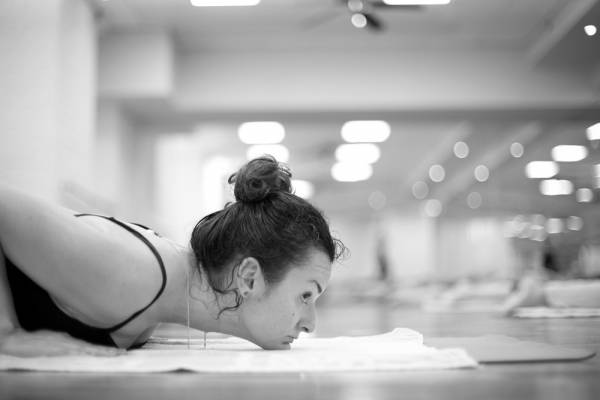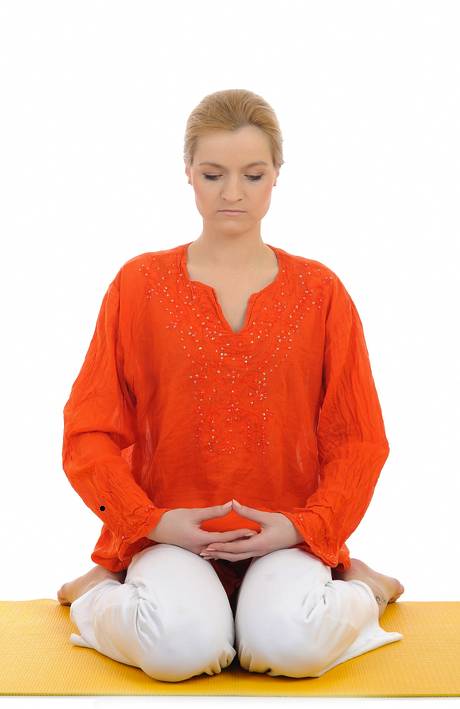In the town that I currently live in, I really can’t walk down the street without seeing at least one yoga studio. On top of that, every single yoga studio is a heated studio, meaning that all classes are done in a heated room with a temperature range from around 90 degrees to 117 degrees. I will not lie to any of you, I was a hot yoga junkie for a long time. That is, until I learned more about the effects of heat on the body when doing any sort of movement, albeit yoga or working out in external, extreme heat.
Hot yoga is a huge craze at the moment. It’s getting more difficult to find a studio that isn’t heated, and all modalities are taught in a heated environment from the standard Bikram to Vinyasa. I was a yoga teacher, having taught in heated and unheated environments, but having some other education has helped me learn more about what I was teaching. Hopefully the facts can help you make the decision yourself, whether yoga in external heat is your friend or your enemy.
External Heat and Body Heat
Hot yoga brings its own external heat source to heat up a room to around 100 degrees. But it’s important to mention that you produce your own internal heat when you exercise, and yes, you can consider yoga moderate exercise. Hot yoga uses static holds (and some flow), which means you are lengthening specific parts of the body depending on what pose you are in and then contracting other parts of the body to keep you stable, which means you are isometrically contracting the muscles that are keeping you stable.
How does your body produce its own internal heat? Several chemical reactions occur in the cells of the muscle tissue. These cells then release energy, which is in the form of heat. The rate of chemical reaction increases during muscle contraction thereby increasing internal heat of the body. This concept is important later on as we continue to talk about heat and its effects on the body.
Hot yoga pretty much gives you a heat-on-heat response, which can lead to heat exhaustion or even heat stroke. When internal heat rises, vasodilation occurs in the blood vessels in the skin and you begin to sweat to cool the body to keep the body within the normal range of body temperature. So you are sweating to cool the body down, you have an increase in blood flow, but the room is heated to over 100 degrees, therefore you have no way of actually cooling your body down, which can cause a disruption of internal body temperature.
How Things Go Wrong
The reason there is a disruption is because the body cools itself down in various ways, but the ones to focus on are conduction, convection, and evaporation. Conduction is exchange in heat with two objects in contact with each other, convection is exchange in heat between the body and air or water, and evaporation is the conversion of water from a liquid to a gas, a process that requires heat. When you are in the heated room, the reason it gets so humid is because several different bodies are sweating and the heat is trying to escape from the bodies because their internal temperatures are increasing.

So what happens when you are so hot in a hot yoga room, you can’t get out, and you begin to get sick? You may be starting to suffer from heat exhaustion. Your body keeps temperature homeostasis via a negative feedback system. This system is working during heat exhaustion, but in this scenario it can’t prevent an increase in body temperature above the normal level. This heavy sweating results in dehydration, decreased blood pressure, and increased heart rate. You may end up feeling weak, dizzy, and nauseated.
When feeling like this you must move into a cooler environment, but having been in many hot yoga studios, many yoga instructors either look down upon seeking relief or encourage students to stay in the room. If you ever have these symptoms you must get into an area of cooler temperatures to get the body back into homeostasis. If you don’t, it may lead to heat stroke that in most cases requires hospitalization.
The Myth of Sweating Toxins
Does your yoga instructor tell you that the sweating is good for you because you are releasing toxins from the body? Well, this statement is not 100% true. Most of what you are sweating is water, but there are other chemicals that make up sweat including salt, potassium, ammonia, and urea. True toxin elimination comes from the kidneys and liver, and some from the colon. Doing a ninety-minute hot yoga session and sweating to death is not releasing toxins. You really are just dehydrating yourself and losing only water weight. I hate the burst the bubble, but my statement is true to the facts of body’s biological systems. If you really want to eliminate toxins from the body, it’s best to talk to your physician or purchase an over-the-counter liver, kidney, or colon cleanse made out of natural ingredients.
The Myth of Flexibility
There is a difference from muscular flexibility and joint flexibility. Your ligaments and tendons don’t get much blood flow, especially your ligaments. The reason for this is because your ligaments are in place to stabilize the joints. When you are in a heated environment, your blood flow increases making you feel like you are more flexible then you really are. Being in intense postures like virasana (pictured to the right) may be more difficult if the studio is unheated because your joints give a stoppage point in the knees, whereas when its heated, you may not feel that stoppage point and surpass your safe zone. Ligaments do have some stretch to them, but not a lot. The more you continue to stretch your ligaments in joint-heavy poses, the higher your risk for tearing a ligament, or stretching them to the point where your joints are not as supported. It’s important to understand that when ligaments stretch out they stay that way and cause joint instability.

Everyone assumes that yoga is good for rehabbing, but understand that yoga is simply another form of moderate exercise and you can still injure yourself. I personally believe that some yoga instructors do not receive enough training in kinesiology or anatomy and physiology to keep people safe, and if you add the heated element into the mix, it does have the potential to be disastrous – especially if someone is new to yoga all together. Understand, this is not to say all yoga instructors are this way. There are many excellent yoga instructors who teach in a heated environment and keep students safe, and if a student is showing signs of heat exhaustion the instructor immediately cares for the student. But unfortunately, not all yoga instructors are created equal.
For all of you athletes, keep yourself safe. Walk out if it’s too damn hot. Don’t surpass your sticking point. And lastly, do your homework. Find a yoga studio and instructor that are right for you.
Photos courtesy of Shutterstock.






